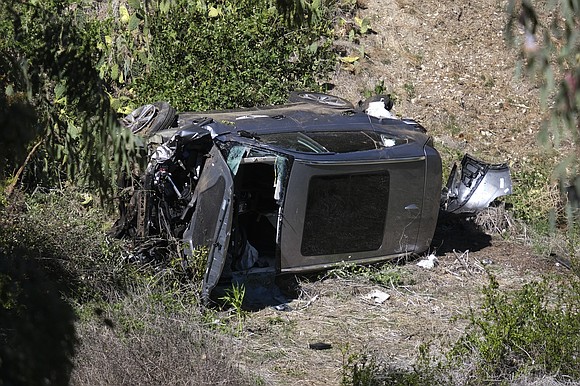What exactly are Tiger Woods' injuries? And what might they mean for his future?
CNN/Stylemagazine.com Newswire | 2/25/2021, 12:45 p.m.

By Holly Yan, CNN
(CNN) -- Tiger Woods' rollover car crash led to serious leg injuries and a flurry of medical terms most people aren't familiar with.
The 45-year-old golf legend was rushed to Harbor-UCLA Medical Center on Tuesday after the wreck. The hospital's chief medical officer described his injuries and immediate treatment in a statement posted to Woods' Twitter account:
"Mr. Woods suffered significant orthopaedic injuries to his lower right extremity that were treated during emergency surgery," Dr. Anish Mahajan said.
"Comminuted open fractures affecting both the upper and lower portions of the tibia and fibula bones were stabilized by inserting a rod into the tibia. Additional injuries to the bones of the foot and ankle were stabilized with a combination of screws and pins.
"Trauma to the muscle and soft tissue of the leg required surgical release of the covering of the muscles to relieve pressure due to swelling."
Here's what all that means and what could be next for the elite athlete:
What are comminuted open fractures?
Woods' fractures affected his right tibia and fibula, which are the two long bones directly under the knee.
A comminuted open fracture means a bone has broken into more than two pieces and that bone has pierced the skin.
"That means there's an increased risk of infection if the fracture isn't washed out quickly," said Dr. Scott Boden, chair of the Department of Orthopaedics at the Emory University School of Medicine in Atlanta.
"And it also means that there's a little higher chance that the bone won't heal in the normal time frame."
What does 'surgical release of the covering of the muscles' mean?
"What that means is that they actually made an incision through the muscles to open up that area so that literally the blood, or the fluid, had a place to go other than to cut off circulation," explained Dr. Jeremy Faust, an emergency physician at Brigham and Women's Hospital in Boston.
Think of a blood vessel as a straw. If you flatten the straw, nothing can get through.
"So what happens in this situation is essentially your blood vessels are getting collapsed because of the pressure from around it," Faust said.
"So this procedure, which is called a fasciotomy, has one thing in mind. And that is to make it so that pressure is relieved so that blood circulation can continue -- so that you don't have permanent nerve damage and so that you don't have actual death of more tissue."
Without treatment, Woods might have been at risk of amputation
Mahajan's statement suggests Woods may have been at risk of amputation had doctors not acted quickly, Faust said.
"The surgeons likely believed that if they did not perform one of those procedures to release that pressure, they actually were worried that he could lose the limb, that amputation might have been necessary," Faust said.
He praised the medical team for trying to prevent "compartment syndrome, which means that the pressure has built up so much that actually blood circulation is being compromised."
"In terms of actually making sure that he has a limb that actually has circulation, they really did the right thing," Faust said.
Did Woods suffer any head injuries?
Based on the hospital's statement, it doesn't appear Woods had any injuries to his head, torso or chest, CNN Chief Medical Correspondent Dr. Sanjay Gupta said.
Shortly after the crash Tuesday morning, "he was able to communicate, and he was conscious," Los Angeles County Sheriff Alex Villanueva said.
Authorities said Woods was wearing his seat belt, and his airbag deployed properly.
What's next for Woods medically?
"It's going to be a long road for Mr. Woods," Faust said.
"Right now, it's unclear to me whether he will actually be going back to the operating room very soon or not because of the way they did these procedures. It's likely an open wound still. So they actually want to have the leg open so the pressure does not build up again."
Faust suspects Woods will likely have a grafting procedure at some point to close the wound.
Then "the road to recovery really begins," he said. But "we're not even really there yet."
What does this mean for his golf career?
"It's just too speculative," Gupta said.
"We know Tiger Woods is the kind of guy that underwent five back operations -- significant operations, including a fusion -- and came back and had this remarkable return to golf. So who knows?"
"For an elite athlete like Tiger," Boden said, "he's got as good a chance (of) coming back from this as anybody does."
"And we know never to count Tiger out from a recovery."



